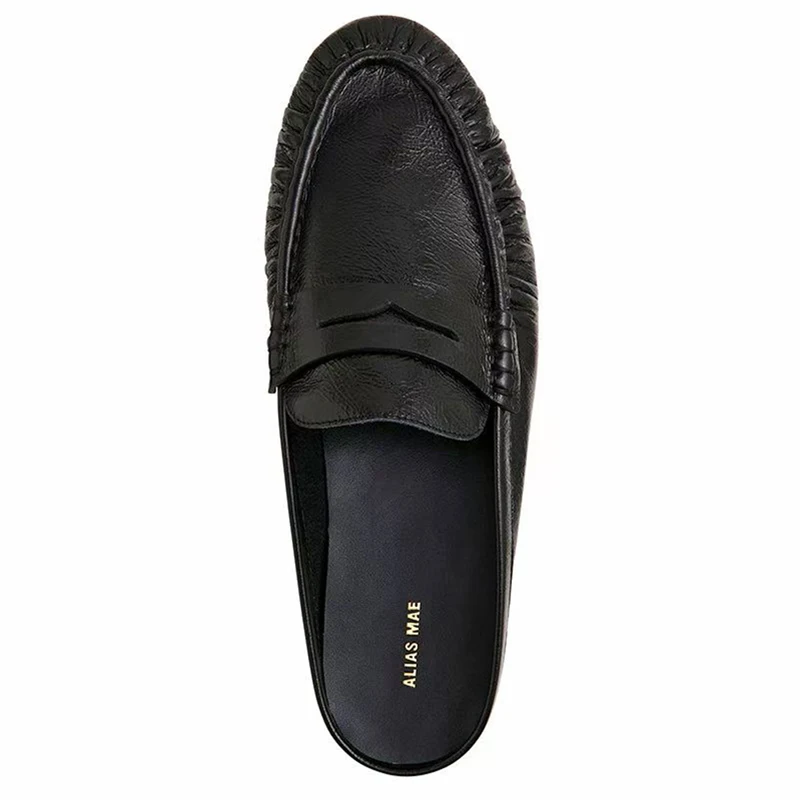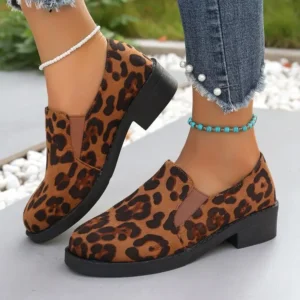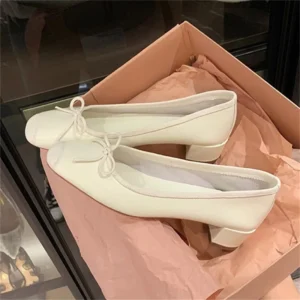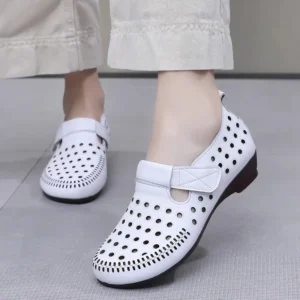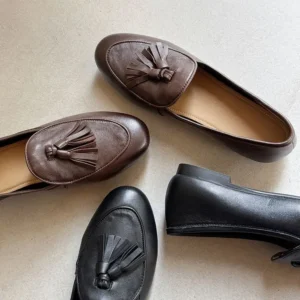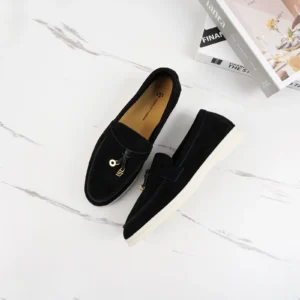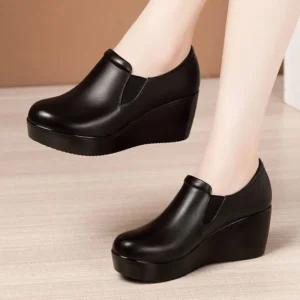Understanding the Importance of Proper Footwear for Warm Weather
When temperatures rise, our footwear needs change dramatically. Summer presents unique challenges that make your regular shoe choices potentially uncomfortable or even harmful. Heat causes feet to swell—sometimes up to half a shoe size—while closed shoes can raise foot temperature by several degrees above normal. This combination often leads to sweating, discomfort, blisters, and even fungal infections if not properly addressed.
Unlike cooler seasons when insulation and protection from elements are priorities, summer footwear must excel at ventilation, moisture management, and temperature regulation while still providing necessary support. The right summer shoes aren’t just about style—they’re essential for maintaining proper foot health during warmer months.
Throughout this guide, we’ll explore what makes ideal summer footwear, from breathable materials to supportive designs. Whether you’re looking for casual everyday options, activity-specific footwear, or sophisticated styles for formal occasions, understanding these fundamentals will help you make choices that keep your feet healthy and comfortable all season long.
Making informed footwear decisions becomes especially important when considering professional office loafer outfits that need to balance workplace appropriateness with warm-weather comfort.
Essential Qualities of Ideal Summer Footwear
A. Breathability: The Foundation of Summer Comfort
Breathability refers to a shoe’s ability to allow air to circulate around the foot. This quality is non-negotiable for summer footwear as proper airflow prevents moisture buildup, reduces odor-causing bacteria, and significantly lowers the risk of fungal infections like athlete’s foot.
The best breathable materials for summer shoes include:
- Natural fabrics like canvas, cotton, and hemp that absorb moisture while allowing air passage
- Mesh constructions that feature built-in ventilation through tiny openings
- Perforated leather or suede that combines durability with strategic air flow
- Innovative materials like eucalyptus fiber that naturally regulate temperature and wick moisture
Research shows that mesh materials can improve airflow by up to 30% compared to solid uppers, making a substantial difference in keeping feet cool. When browsing women’s loafer mules, look for options with perforations or breathable materials specifically designed for warmer weather.
B. Lightweight Construction for All-Day Comfort
Heavy footwear quickly becomes exhausting in summer heat. Winter boots typically weigh 2-3 pounds (0.9-1.4 kg) per shoe, while quality summer footwear often weighs under 0.5 pounds (0.23 kg). This dramatic difference directly impacts your energy levels and comfort during extended wear.
Modern lightweight summer shoes often feature innovative materials like EVA (ethylene vinyl acetate) or advanced rubber compounds that provide cushioning without bulk. These materials maintain structural integrity while significantly reducing overall weight, allowing for natural movement and reducing foot fatigue during summer activities.
Understanding footwear design comfort principles helps appreciate how weight distribution and materials work together to create the ideal summer shoe experience.
C. Support, Cushioning, and Proper Fit
While summer shoes trend toward minimalism, sacrificing support for style can lead to foot pain and injuries. Even the lightest summer footwear should provide:
- Adequate arch support for your foot type
- Cushioning in high-impact areas (heel and ball of foot)
- Flexible soles that allow natural foot movement
- Proper fit with room for slight expansion (feet can expand up to 5% in volume during hot weather)
Many people mistakenly believe lightweight summer shoes must sacrifice support, but quality options balance both needs. When selecting summer footwear, remember that finding comfort and foot support in flat loafers or other styles means looking beyond appearance to structural elements that maintain foot health.
D. Material Selection for Hot Weather Performance
Material choice dramatically impacts how shoes perform in hot weather. Natural materials like cotton, linen, and jute typically offer better breathability than synthetic alternatives, though advanced technical fabrics can provide excellent moisture-wicking properties.
Cork stands out as an exceptional summer material as it naturally regulates temperature, provides cushioning, and conforms to your foot shape. Meanwhile, jute (commonly used in espadrille soles) offers biodegradability and natural texture while remaining lightweight.
For water exposure, quick-drying synthetic materials often outperform natural options, drying up to three times faster. Quality women’s leather flat loafers made with perforated or unlined leather can combine sophistication with summer-appropriate breathability, making them versatile options for warmer months.
Top Summer Footwear Styles by Category
A. Everyday Casual Options for Maximum Comfort
1. Sandals: The Quintessential Summer Shoe
Nothing says summer quite like sandals—the ultimate expression of warm-weather footwear. Their open design maximizes airflow while minimizing contact points that could cause irritation. Modern sandals generally fall into three main categories:
- Slides: Offering convenience and easy on-off wear, ideal for poolside or quick errands
- Strappy sandals: Providing better foot security with adjustable fit options for various foot shapes
- Supportive sandals: Featuring contoured footbeds, arch support, and cushioning for extended walking
Podiatrists recommend that sandals worn for walks longer than 20 minutes should include at least some arch support to prevent fatigue and strain. Cork footbeds, found in many quality sandals, offer natural support that molds to your foot shape over time while providing environmentally-friendly durability.
When choosing sandals, consider the primary activity they’ll be used for—beach sandals should prioritize water resistance and quick-drying properties, while walking sandals need more substantial support and secure strapping.
2. Espadrilles: Breathable Versatility
Espadrilles trace their origins to the Mediterranean region, where they’ve been the warm-weather footwear of choice for centuries. These versatile shoes feature canvas, linen, or cotton uppers paired with distinctive jute rope soles that provide natural cushioning and breathability.
Modern espadrilles come in various styles, from traditional flats to wedges and platforms, making them adaptable for different occasions. Their natural materials create a microclimate around the foot that regulates temperature effectively, while the rope sole provides surprising durability and a distinctive summer aesthetic.
Most espadrilles are designed to be worn without socks, making the soft interior finish particularly important to prevent irritation during barefoot wear. Their lightweight construction and flexible design make them perfect for packing in summer travel bags while still offering versatility for both casual and semi-formal occasions.
3. Breathable Sneakers and Canvas Shoes
Summer sneakers differ significantly from their athletic or winter counterparts, focusing on ventilation without sacrificing style or basic support. The best warm-weather sneaker options include:
- Classic canvas styles with lightweight, breathable uppers
- Mesh-constructed sneakers that maximize airflow from all directions
- Modern knit uppers that combine stretch comfort with ventilation
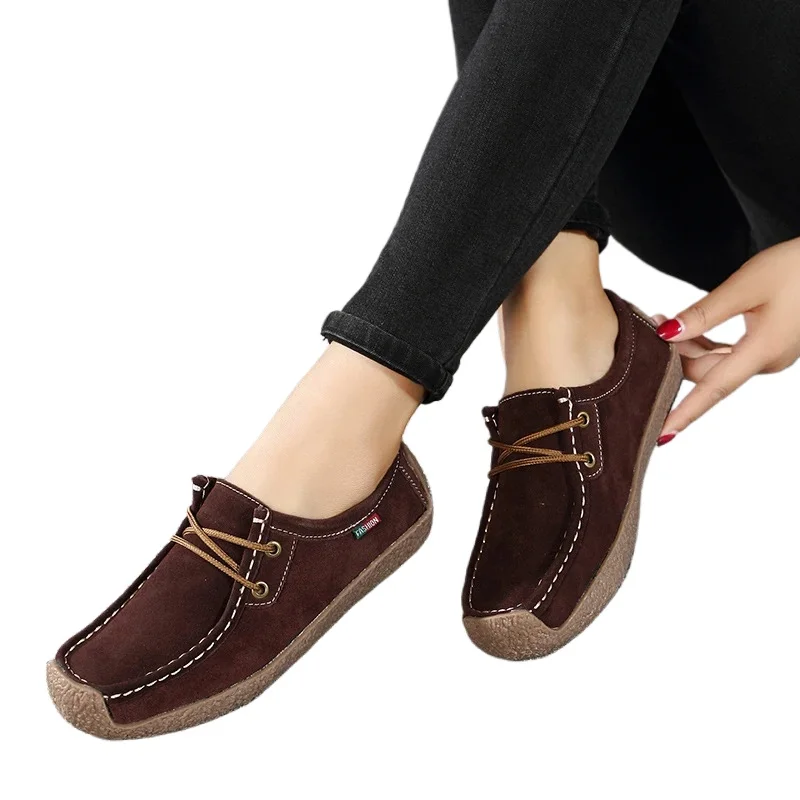
These styles often feature moisture-wicking linings and antimicrobial treatments that make sockless wear more comfortable and hygienic. Some advanced mesh constructions can increase air circulation by over 40% compared to traditional sneakers, significantly improving comfort in hot conditions.
When looking for the perfect summer sneaker, consider women’s comfortable flat loafers with canvas or perforated construction as an elegant alternative that provides sneaker-like comfort with elevated style.
4. Lightweight Slip-Ons: Loafers and Mules
Summer-appropriate loafers differ from their traditional counterparts through unlined construction, perforated designs, and lightweight materials that enhance breathability. These modifications maintain the classic silhouette while adapting to warm weather needs.
Mules—backless loafers—offer additional ventilation advantages by eliminating the heel counter, allowing more airflow while maintaining a sophisticated appearance. This design makes them particularly suitable for warm-weather professional environments where more casual sandals might not be appropriate.
Premium construction details like padded insoles, soft leather linings, and flexible soles distinguish quality summer loafers from less comfortable alternatives. The versatile footwear options of mule loafers particularly shine in summer months when their easy on-off design and enhanced ventilation provide practical benefits beyond style.
B. Activity-Specific Summer Footwear
1. Performance Shoes for Active Summer Pursuits
Active summer lifestyles demand specialized footwear with enhanced features beyond everyday comfort. Performance summer shoes incorporate advanced technologies like:
- Engineered mesh uppers with targeted ventilation zones for maximum cooling
- Moisture-wicking linings that pull sweat away from the skin
- Quick-drying materials that can return to normal condition within hours after getting wet
- Lightweight stabilizing elements that maintain support without adding bulk
Performance mesh in athletic shoes differs significantly from casual mesh construction, often featuring variable density zones that provide structure and support while maintaining breathability. These technical fabrics can enhance air circulation by up to 40% compared to traditional athletic shoe materials.
Different activities require specific adaptations—running shoes need enhanced cushioning and flexibility, hiking sandals require robust traction and toe protection, and water sport shoes demand quick drainage and slip-resistant soles.
2. Water-Friendly Footwear Solutions
Water exposure creates unique challenges for footwear, requiring specialized designs that perform well when wet. Water-appropriate summer shoes include:
- Dedicated water shoes with drainage ports and quick-drying synthetic uppers
- Water sandals with secure fit systems and antimicrobial footbeds
- Hybrid options that transition from land to water with adequate drainage and traction
Materials designed for water exposure can dry up to four times faster than standard footwear materials, with some advanced options drying completely within 2-3 hours. Silicone and hydrophobic mesh are particularly effective for water shoes, as they resist water absorption while maintaining structure when wet.
Traction becomes critical in wet environments, with specialized rubber compounds and siping (thin slits cut into the outsole) dramatically improving grip on slippery surfaces. The best water shoes balance protection from sharp objects with drainage features that prevent water retention.
C. Elevated Options for Warmer Weather Events
1. Sophisticated Open Designs for Formal Occasions
Formal summer events require footwear that balances elegance with practical comfort in warm conditions. Sophisticated open designs achieve this balance through:
- Strategic cutouts that enhance ventilation while maintaining a formal appearance
- Slingback designs that secure the foot while exposing the heel for cooling
- Woven leather patterns that create natural ventilation between leather elements
- Premium materials that wick moisture effectively while presenting a polished appearance
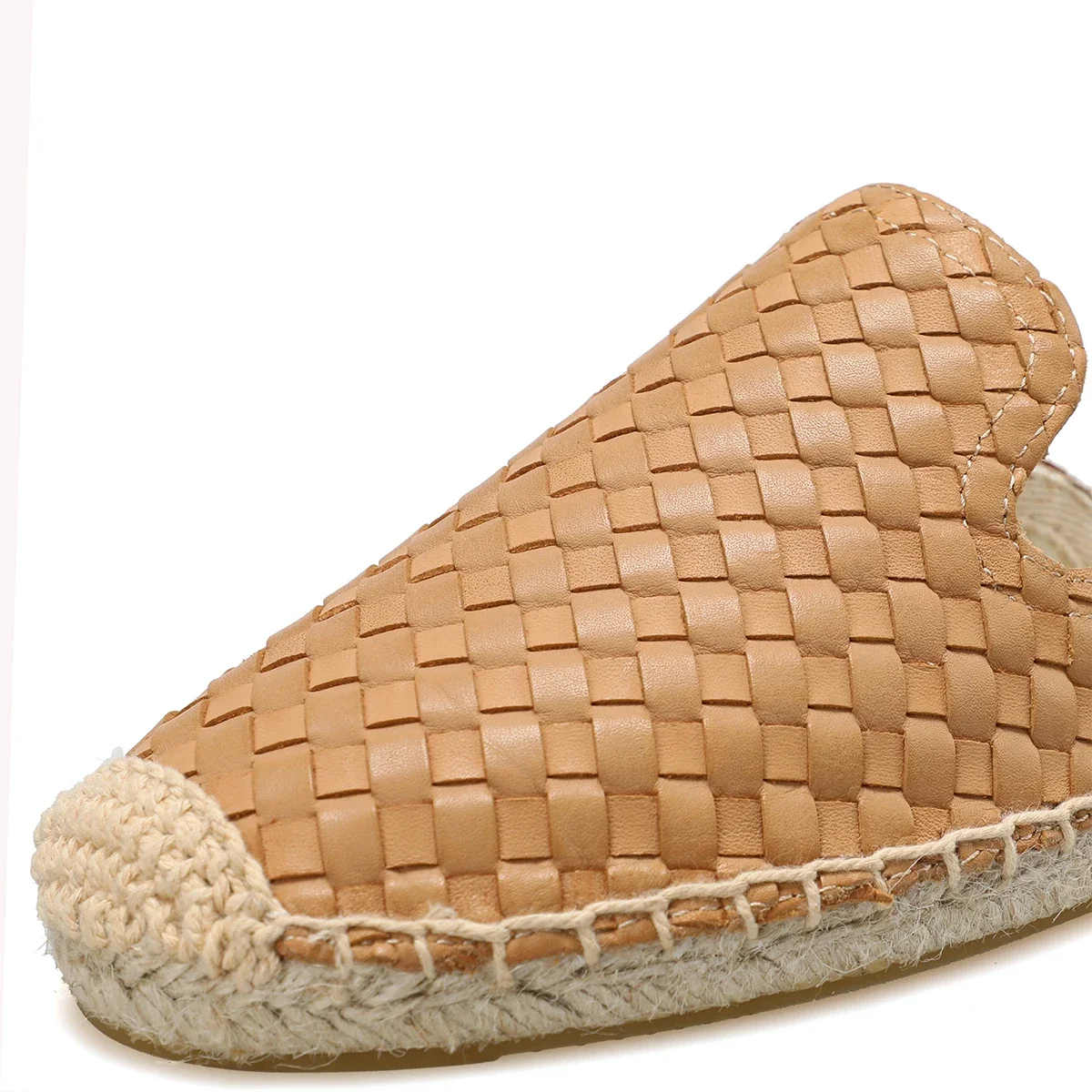
The quality of materials becomes particularly important in formal summer footwear, as premium leathers and textiles manage moisture and temperature more effectively while providing the sophisticated appearance these occasions demand. Understanding how to wear loafers in office settings during summer requires selecting styles with these refined ventilation features while maintaining professional standards.
2. Summer-Appropriate Heels and Wedges
Summer events often call for elevated footwear, but traditional stilettos can become uncomfortable and even hazardous on soft summer surfaces like grass or sand. Summer-appropriate elevated styles address these challenges through:
- Block heels that distribute weight more evenly and provide stability
- Wedges (especially with cork or raffia elements) that offer support and summer-appropriate aesthetics
- Platform designs that provide height with less extreme foot angles
- Natural materials like cork that conform to the foot while regulating temperature
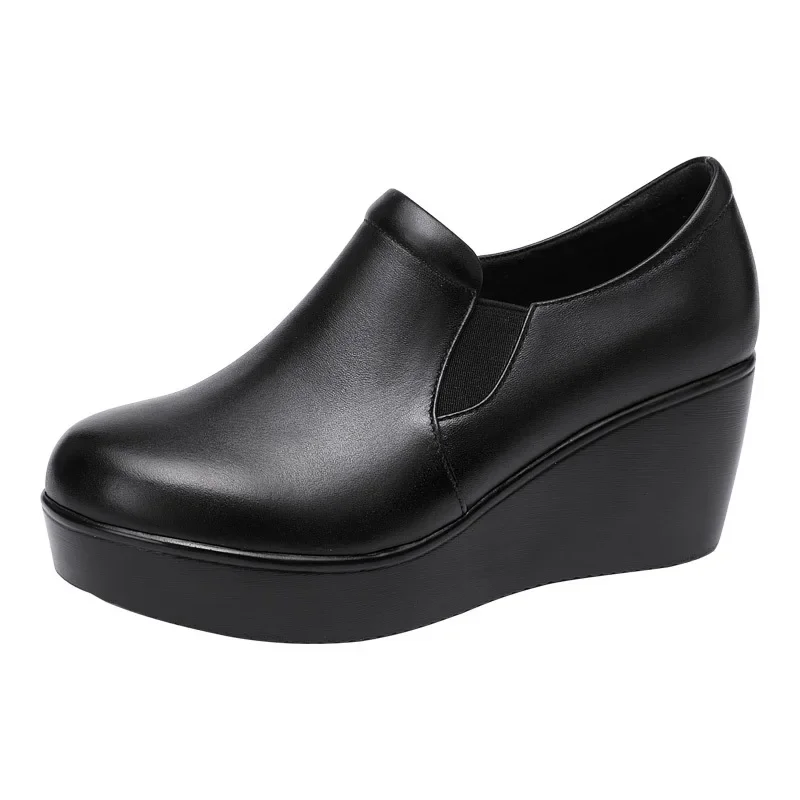
Block heels distribute pressure across a wider surface area, reducing foot fatigue by up to 30% compared to stilettos of equal height. This makes them significantly more comfortable for outdoor summer events where standing for extended periods is common.
For sophisticated summer elevation, consider women’s wedge heel loafers that combine the stability of wedges with the classic style of loafers, creating a versatile option for warm-weather professional and social occasions.
3. Classic Warm Weather Dress Shoes
Timeless dress shoes can adapt beautifully to summer conditions through thoughtful design modifications:
- Boat shoes that combine nautical heritage with practical features for warm, potentially wet conditions
- Perforated oxfords and derbies that maintain formal structure while enhancing ventilation
- Lightweight loafers with premium construction that balance sophistication with comfort
Quality construction becomes even more critical in warm weather dress shoes, with features like padded heel collars preventing friction, soft linings absorbing moisture, and flexible constructions accommodating natural foot expansion in heat.
When considering business casual loafer outfits for summer, look for these thoughtful adaptations that maintain professional appearance while acknowledging seasonal needs. Premium construction that eliminates unnecessary layers and incorporates breathable materials makes a substantial difference in all-day comfort.
Women's Comfortable Flat Loafers, Women's Leopard Print Loafers, Women's Low Heel Loafers
$82.50 Select options This product has multiple variants. The options may be chosen on the product pageWomen's Block Heel Loafers, Women's Square Heel Loafers, Women's Square Toe Flat Loafers
Price range: $73.61 through $86.41 Select options This product has multiple variants. The options may be chosen on the product pageWomen's Comfortable Flat Loafers, Women's Leather Flat Loafers, Women's Round Toe Flat Loafers
$124.88 Select options This product has multiple variants. The options may be chosen on the product pageWomen's Black Flat Loafers, Women's Black Penny Loafers, Women's Classic Tassel Loafers
$194.28 Select options This product has multiple variants. The options may be chosen on the product pageWomen's Loafer Mules, Women's Suede Flat Loafers
$190.23 Select options This product has multiple variants. The options may be chosen on the product pageWomen's High Platform Loafers, Women's Wedge Heel Loafers
$171.07 Select options This product has multiple variants. The options may be chosen on the product page
Making the Perfect Selection: Key Considerations
A. Matching Footwear to Specific Activities and Settings
The ideal summer footwear varies significantly depending on how you’ll use it. Consider these activity-specific needs:
- Urban walking/sightseeing: Prioritize cushioning, support, and versatile style that transitions between attractions and restaurants
- Beach and pool: Focus on water-resistance, quick-drying materials, and easy cleaning
- Travel: Select packable, versatile options that work across multiple outfits and occasions
- Workplace: Balance professional appearance with appropriate cooling features
Evaluating your primary needs helps narrow options to those that will truly perform in your specific contexts. The most versatile summer footwear often comes from women’s flat classic loafers with breathable construction, as they can transition from casual to professional settings while providing all-day comfort.
B. Climate-Specific Considerations
Not all “summer” climates are identical, and your local conditions should guide footwear selection:
- Dry heat: Prioritizes breathability and minimal material
- Humidity: Demands moisture-wicking properties and quick-drying capabilities
- Mixed conditions: Benefits from versatile designs that handle both sunny days and sudden showers
Materials perform differently across climates—canvas and natural fibers excel in dry heat but can become uncomfortable when saturated with humidity. Meanwhile, certain technical synthetics manage moisture more effectively in humid conditions while still allowing adequate ventilation.
C. Foot Health and Special Considerations
Common foot conditions require additional attention when selecting summer footwear:
- Plantar fasciitis: Look for substantial arch support and cushioned heel cups
- Bunions: Choose wider toe boxes and soft, flexible materials around problem areas
- Flat feet: Prioritize structured support and motion control features
- Blister-prone feet: Seek seamless construction and moisture-wicking materials
Summer heat often exacerbates existing foot problems, making supportive features even more important than in cooler seasons. For persistent foot pain, consult a podiatrist who can provide personalized recommendations based on your specific needs and foot structure.
D. Finding the Right Fit for Warm Weather
Summer fit considerations differ from year-round guidelines:
- Shop later in the day when feet are naturally more swollen (similar to summer conditions)
- Consider going up a half-size in closed summer shoes to accommodate expansion
- Look for adjustable features like straps that can adapt to changing foot volume
- Test summer shoes with the appropriate hosiery (often none) that you’ll actually wear
A proper summer fit should feel secure without tightness, with adequate room across the widest part of your foot and no pressure points that could become painful when feet naturally expand in heat.
Care and Maintenance for Summer Footwear
A. Material-Specific Cleaning and Care
Different summer materials require specific cleaning approaches:
- Canvas and textiles: Machine washable in gentle cycle (remove insoles first) or spot clean with mild soap and water
- Leather: Wipe with damp cloth and condition with appropriate leather products; allow thorough drying away from direct heat
- Mesh: Rinse with cool water and mild soap; stuff with paper to maintain shape while drying
- Natural fibers (jute, cork): Brush gently when dry; treat stains immediately with appropriate cleaner
Regular cleaning prevents dirt and sweat from breaking down materials prematurely. For footwear worn without socks, more frequent cleaning is essential as direct foot contact increases moisture and oil transfer to the shoe. Understanding whether it is unprofessional to wear loafers without socks in summer work environments helps balance comfort with appropriate maintenance routines.
B. Protection, Storage, and Longevity
Extend the life of your summer footwear through proper care:
- Apply appropriate protectants before first wear (water repellents for leather, stain guards for textiles)
- Allow complete drying between wears to prevent odor and material breakdown
- Store in cool, dry places away from direct sunlight which can fade colors and degrade materials
- Rotate between multiple pairs to allow proper drying and recovery
Quality summer footwear properly maintained can last several seasons, making investment in well-constructed options worthwhile. When storing summer shoes at season’s end, ensure they are thoroughly clean and dry, then stuff with acid-free paper to maintain shape during off-season storage.
C. Managing Foot Health in Summer Footwear
Maintain optimal foot health with these summer-specific practices:
- Consider no-show socks with silicone heel grips for “sockless” appearance with moisture control
- Apply foot powder to control moisture and prevent friction
- Use moleskin or silicone protectors on areas prone to blistering
- Alternate different shoe styles to vary pressure points on the foot
For barefoot wear, antimicrobial insoles or removable footbeds that can be regularly washed help maintain hygiene. Simple foot care like regular exfoliation removes dead skin that can cause friction, while moisturizing prevents cracking from exposure in open shoe styles.
Conclusion: Stepping Forward with Confidence
Selecting the perfect summer footwear involves balancing style preferences with practical considerations of comfort, support, and appropriate materials. The ideal choices will vary based on your specific needs, activities, and foot characteristics, but the fundamental qualities remain consistent: breathability, lightweight construction, proper support, and suitable materials.
By prioritizing these essential qualities and considering the specific contexts where you’ll wear your summer shoes, you can make choices that keep your feet comfortable and healthy throughout the warmest months. Remember that investment in quality construction pays dividends in comfort, as premium footwear like those offered by Artisan Haul often incorporates thoughtful details that make a significant difference during extended summer wear.
Whether you’re seeking casual everyday comfort, performance for active pursuits, or sophisticated options for warm-weather events, applying these guidelines will help you step confidently through summer with footwear that truly serves your needs.

